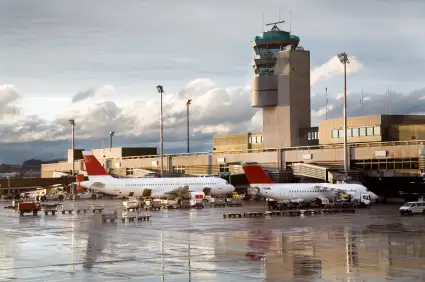
Although it’s now ancient history—and a plotline American executives would rather be forgotten—it’s worth remembering that before US Airways chief Doug Parker bulled his way into the conversation, American insisted loudly and often that its post-merger future was as a stand-alone carrier.
Fast-forward to today, and American is equally vociferous in its embrace of the opposite position. Now the airline proclaims that it can’t compete against the likes of Delta and United unless it merges with US Airways.
And in documents filed with the District Court for the District of Columbia, lawyers for American and US Airways contend that delaying the trial to adjudicate the Justice department’s suit to halt the merger will derail the tie-up altogether. The DOJ has proposed a March 2014 trial date. American wants the trial to start on November 12.
From the latest filing:
The delay proposed by plaintiffs inherently puts the transaction at risk because two independent companies can be asked to stay in limbo for only so long before they need to make independent plans. To avoid a schedule that could itself be outcome determinative, this trial should be set for November 12, 2013 (or as soon thereafter as the Court’s schedule will accommodate).
The filing includes a chart that shows that most merger trials with long gaps between the filing of the complaint and the ensuing litigation did in fact result in the mergers’ being abandoned.
There’s obviously some legal gamesmanship going on in the to and fro between the airlines and the DOJ. But there’s also some truth in both sides’ arguments. A lot hangs in the balance for US Airways and, especially, American; the carriers need clarity and closure as soon as possible. The DOJ, on the other hand, needs time to prepare for a trial whose outcome will profoundly affect the airline industry for years to come.
There’s a conference set for Friday, at which time the judge is expected to announce the final schedule for the trial.
Merger Cheat Sheet
- The new company would retain the “American Airlines” name and be based at American’s Ft. Worth headquarters.
- US Airways chief Doug Parker will be the new CEO. American chief Tom Horton will be named chairman of the new board and remain in that position until the spring of 2014 when the company’s first annual shareholder meeting will be held. When Horton departs the board, Parker will assume his position as chairman.
- American’s creditors would own around 72 percent of the new company; US Airways shareholders would get the rest.
- Based on 2012 results, the new company would have generated $38.7 billion in revenue.
- The merger is expected to generate around $1 billion in combined extra revenue and cost savings for the new company.
- The new company will be valued at around $11 billion.
- Combining the third- and fifth-largest U.S. carriers will create the world’s largest airline, in terms of passenger traffic.
- Prior to any post-merger rationalization, the two airlines will have around 120,000 employees, 950 planes, 6,500 daily flights, and eight major hubs (American: Dallas, Miami, Chicago, Los Angeles, New York; US Airways: Phoenix, Philadelphia, Charlotte). Although the carriers promise to maintain all current hubs, Phoenix and Philadelphia are likely to be downsized in the post-merger “rationalization.”
- The new American will be a member of the oneworld alliance, not the Star Alliance.
- The merger is subject to review and approval by U.S. regulators. That wasn’t expected to be a problem since there is relatively little overlap between the two airlines’ networks.
- The actual merger won’t happen overnight. United and Delta required five and seven months respectively to secure the necessary approvals for their mergers.
- It was 22 months after their merger closed before United and Continental finally merged their frequent flyer programs. Expect a similar post-close interval before American and US Airways consolidate their programs.
- Comparisons between American and US Airways’ current mileage programs are probably moot since there’s a high likelihood that an entirely new revenue-based program (like Southwest’s) will be introduced to replace both programs.
- After the merger, 83 percent of U.S. domestic air traffic will be in the hands of just four airlines (American 26 percent, United 19.3 percent, Delta 19.2 percent, Southwest 17.3 percent).
This article originally appeared on FrequentFlier.com.
We hand-pick everything we recommend and select items through testing and reviews. Some products are sent to us free of charge with no incentive to offer a favorable review. We offer our unbiased opinions and do not accept compensation to review products. All items are in stock and prices are accurate at the time of publication. If you buy something through our links, we may earn a commission.
Related
Top Fares From
Today's Top Travel Deals
Brought to you by ShermansTravel
Shop and Save with Country Inns...
Patricia Magaña
 Hotel & Lodging Deals
Hotel & Lodging Deals
$229 -- Chicago: Discounted Rates and...
Francesca Miele
 Hotel & Lodging Deals
$229+
Hotel & Lodging Deals
$229+
$188 -- Honolulu: Save on Oceanview...
Abigail Lamay
 Hotel & Lodging Deals
$188+
Hotel & Lodging Deals
$188+



